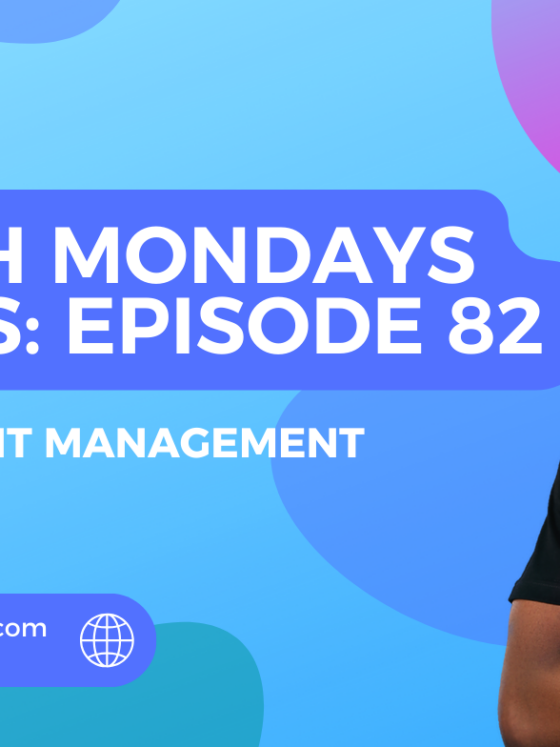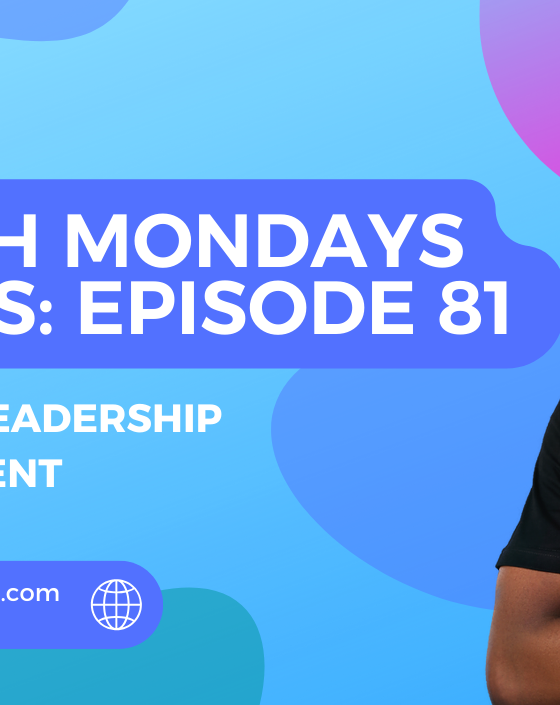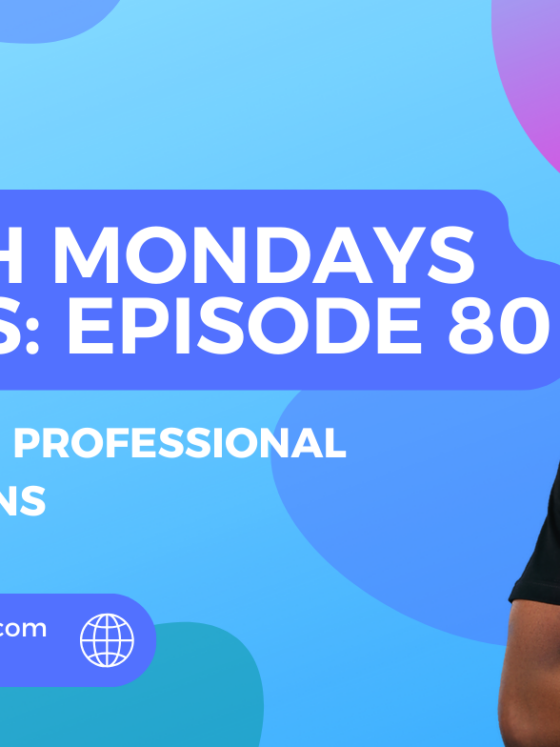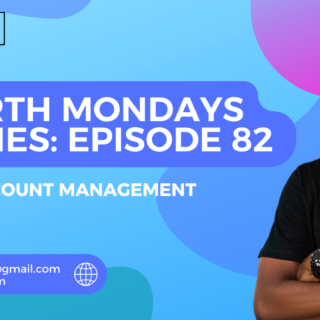Competitive Intelligence – Staying Ahead in Market Entry
North Mondays Series: Episode 83

Imagine moving to a new city without a map or guide. Chances are that you’ll get lost a fair amount of times and frustration will set in. It’s the same with entering a new market. A great product or service is commendable but you’ll need much more than that to level the playground and stay ahead of the competition. When you study your competitor’s game plan, it leaves room for little to no surprises because you become familiar with their game. That’s what understanding the competitive landscape does for you. A sure way to staying on top of your game and ahead of the competition is mastering Competitive Intelligence (CI). This is the art of gathering, analyzing, and applying information about your competitors and the broader market, so you can make better-informed strategic decisions and position yourself effectively.
With a great product or service, extensive knowledge on the game plan of your competitors, insights on the peculiarities surrounding your chosen market and the behaviors of your target audience, you’ll be unstoppable. Competitive Intelligence allows you identify gaps and leverage opportunities before others get the chance to do so. It’s a strategic approach that helps you build a more informed, flexible, and responsive market entry strategy, setting the stage for long-term success.
Today, in Episode 83 of the North Mondays Series, we’re unpacking how to harness Competitive Intelligence to navigate market entry successfully. We’ll cover the essentials of CI, how to gather meaningful data, analyze competitors, and anticipate trends to make informed decisions. By the end of this episode, you’ll know exactly how to position yourself to stand out from the crowd.
Ready to level up your market entry strategy and set yourself up for success? Read on to discover how to leverage Competitive Intelligence to sharpen your edge and stay ahead. Your journey to smarter, more strategic business moves begins here!
Introduction: Why Competitive Intelligence Matters
Welcome to the North Mondays Series, where each week, we explore practical strategies for business success! 🌟 In last week’s episode, we focused on validating business ideas using Lean principles. Today, in Episode 83, we’re diving into the world of Competitive Intelligence (CI)—a critical tool for anyone entering a new market. With CI, you gain actionable insights into your competitors and the market landscape, allowing you to create a well-informed, strategic approach to market entry.
Entering a market without competitive intelligence is like navigating a new city without a map or tour guide. Let’s explore how to gather, analyze, and apply CI to make your market entry a success.
The Fundamentals of Competitive Intelligence
Competitive Intelligence (CI) involves collecting, analyzing, and utilizing information about competitors, market conditions, customer behaviors, and industry trends. It’s an ongoing process that keeps you agile and aware of shifts in the competitive landscape.
Why CI is essential for market entry:
- Helps identify market gaps where your product can shine.
- Provides insights into competitors’ strengths and weaknesses.
- Informs strategic decisions about pricing, positioning, and product features.
Key Sources of Competitive Intelligence
Want to build a strong CI foundation that leaves you one step ahead? Here are some primary sources to consider:
- Public Records: Access financial reports, industry news, and press releases to understand your competitors’ recent moves and financial standing.
- Social Media Monitoring: Analyze competitors’ social media activity to learn about their marketing campaigns, customer engagement, and brand perception.
- Customer Reviews: Dive into customer reviews on platforms like Google, Amazon, and Yelp to see where competitors are excelling or falling short.
- Industry Reports: Research industry reports and analyst publications for insights on market trends, customer needs, and emerging technologies.
Conducting a Competitor Analysis
Competitor analysis is the core of CI, helping you identify who your competitors are, what they offer, and how they’re positioned in the market.
Here’s how to perform a thorough analysis:
- Identify direct and indirect competitors: Direct competitors offer a similar product or service, while indirect competitors may meet the customer’s need differently.
- Assess product features: Understand what each competitor’s product or service offers. Are there any features that your product has that they don’t, or vice versa?
- Evaluate pricing strategies: Study competitor’s pricing structures to identify opportunities for differentiation, whether through premium offerings or cost advantages.
- Analyze brand positioning: Assess each competitor’s branding and positioning in the market to identify opportunities for unique messaging.
Understanding Market Trends and Opportunities
CI isn’t just about competitors; it’s also about understanding broader market trends. Identify trends that could influence your product’s success, such as shifts in customer preferences, emerging technologies, and economic factors. Tools like Google Trends, industry-specific research sites, and subscription-based services like Statista can be invaluable here.
Examples of valuable trend analysis include:
- Technological advancements that might make your product more appealing.
- Economic changes that influence customer spending habits.
- Shifts in consumer preferences, such as an increasing demand for sustainability or convenience.
How to Gather and Interpret CI Data
Collecting CI data requires a combination of manual research, technology tools, and analytical skills. Use SWOT analysis to organize your findings into strengths, weaknesses, opportunities, and threats. Additionally, consider using competitive analysis tools like SEMrush, SimilarWeb, and Ahrefs to streamline data collection.
Interpreting CI data effectively:
- Look for patterns that reveal strengths to leverage and weaknesses to avoid.
- Identify opportunities that competitors have missed.
- Track how these insights align with your company’s capabilities and resources.
Using CI to Build a Unique Market Entry Strategy
Once you’ve gathered and interpreted your CI data, use it to build a unique market entry strategy. Consider how your findings can inform each of the following aspects:
- Positioning: Leverage insights from competitor positioning to create a unique value proposition.
- Pricing: Use competitor pricing analysis to determine your pricing strategy, whether you’ll compete on price or offer a premium service.
- Marketing: Identify gaps in competitor’s marketing strategies, and position your brand in a way that resonates with target customer’s needs.
Example of differentiation using CI: Imagine you discover that most competitors focus heavily on pricing but lack quality customer support. Positioning your business as a premium option with superior customer service would definitely attract a loyal customer base as people love to be seen and heard.
Continuous CI: Staying Ahead After Market Entry
The market place is subject to change hence Competitive Intelligence isn’t a one-and-done exercise. After entering the market, maintain a regular CI process to stay updated on competitor’s actions, customer feedback, and new trends. This ongoing effort will help you adapt to changes and maintain a competitive edge.
How to keep CI consistent post-entry:
- Schedule quarterly competitor analysis to review any significant changes.
- Use analytics tools to monitor competitors’ digital presence and customer engagement.
- Regularly survey customers for feedback on already existing strategies, strengths and weaknesses in order to find out what to leverage, implement and do away with.
Conclusion: Leverage CI for a Winning Market Entry
Competitive Intelligence empowers you to make informed decisions, position your business uniquely, and avoid costly missteps when entering a new market. By gathering and analyzing CI, you can create a strategy that not only stands out but anticipates and adapts to changes in the market.
Join the Conversation: Share Your CI Insights
That wraps up Episode 83 of our North Mondays Series! Did you know about Competitive Intelligence before today? If Yes, what’s your experience with Competitive Intelligence? If No, is it something you intend to implement or are there any issues you’d like us to address and clarify? Are you a wiz at Competitive Intelligence? Then share your thoughts and tips in the comments below, and don’t forget to subscribe to “Biz Dev with Nnanna” for more episodes and actionable insights.
#CompetitiveIntelligence #MarketEntryStrategy #NorthMondays #BizDevWithNnanna #BusinessDevelopment #Entrepreneurship #MarketResearch #StayAhead
FAQs
How do you validate business ideas?
I know you’ve spent hours brainstorming, writing down business ideas and you can’t wait to execute, secure investors and watch the money start rolling in but pause. Have you done your research? Is there a market for your intended product? Validation ensures that there’s demand for your product. It saves you time and ultimately money.
Thankfully, Competitive Intelligence gives you insights into customer needs, competitors’ offerings, and market trends to confirm that your business idea meets a unique need and is strategically positioned as low hanging fruit for your target audience to find.
What are the 7 practical steps to gather competitive intelligence?
- Identify your competitors.
- Monitor public records and press releases.
- Track competitors on social media.
- Collect customer reviews and feedback.
- Analyze industry reports and trend analysis.
- Conduct SWOT analysis to interpret data.
- Use insights to differentiate your market entry strategy.
What is the CI approach for market entry?
Competitive Intelligence involves a strategic process of gathering data on competitors and the market, analyzing it, and applying insights to create a differentiated approach. This process helps you anticipate competitors’ moves, understand market needs, and position yourself effectively.
How do I test my market entry strategy with CI?
Use CI to refine your strategy by comparing competitor data with market needs. Test your positioning, pricing, and messaging through feedback from potential customers and analysis of competitors’ strengths and weaknesses.
What tools can assist in competitive intelligence?Tools like SEMrush, SimilarWeb, Ahrefs, and industry-specific databases streamline CI data collection and provide insights into competitor’s digital performance, keywords, and engagement strategies.










Recent Comments